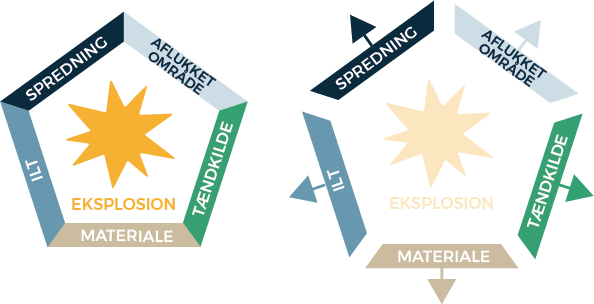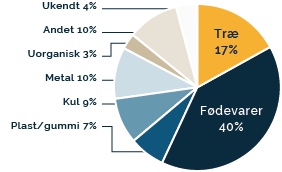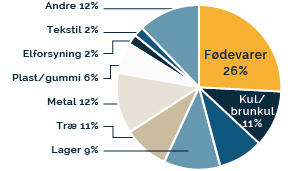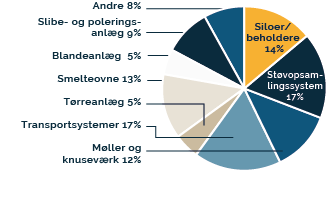What makes an explosion occur?
An explosion can occur when five basic conditions are present – known as the explosion pentagon:
- An enclosed area – e.g. a silo, tank or other type of container
- Combustible material – e.g. organic dust material, gases or chemical substances that develop vapours
- Explosive atmosphere, i.e. the mixture of the combustible material with oxygen in a concentration between the lower and upper explosion limit
- Source of ignition – e.g. sparks, welding, electrical faults, self-ignition or overheated machine parts
- Oxygen or other oxidising material.
If all five conditions are present, there is a risk of explosion. The explosion’s intense heat and powerful blast waves often result in serious injuries – both because of the explosion itself, which causes pressures as high as 10–12 barg, but also because explosions often cause subsequent fires or the dangerous secondary explosions when the initial blast waves have whirled even more combustible material into the air.

![Homepage [EN]](/media/1554/logo.svg)







































